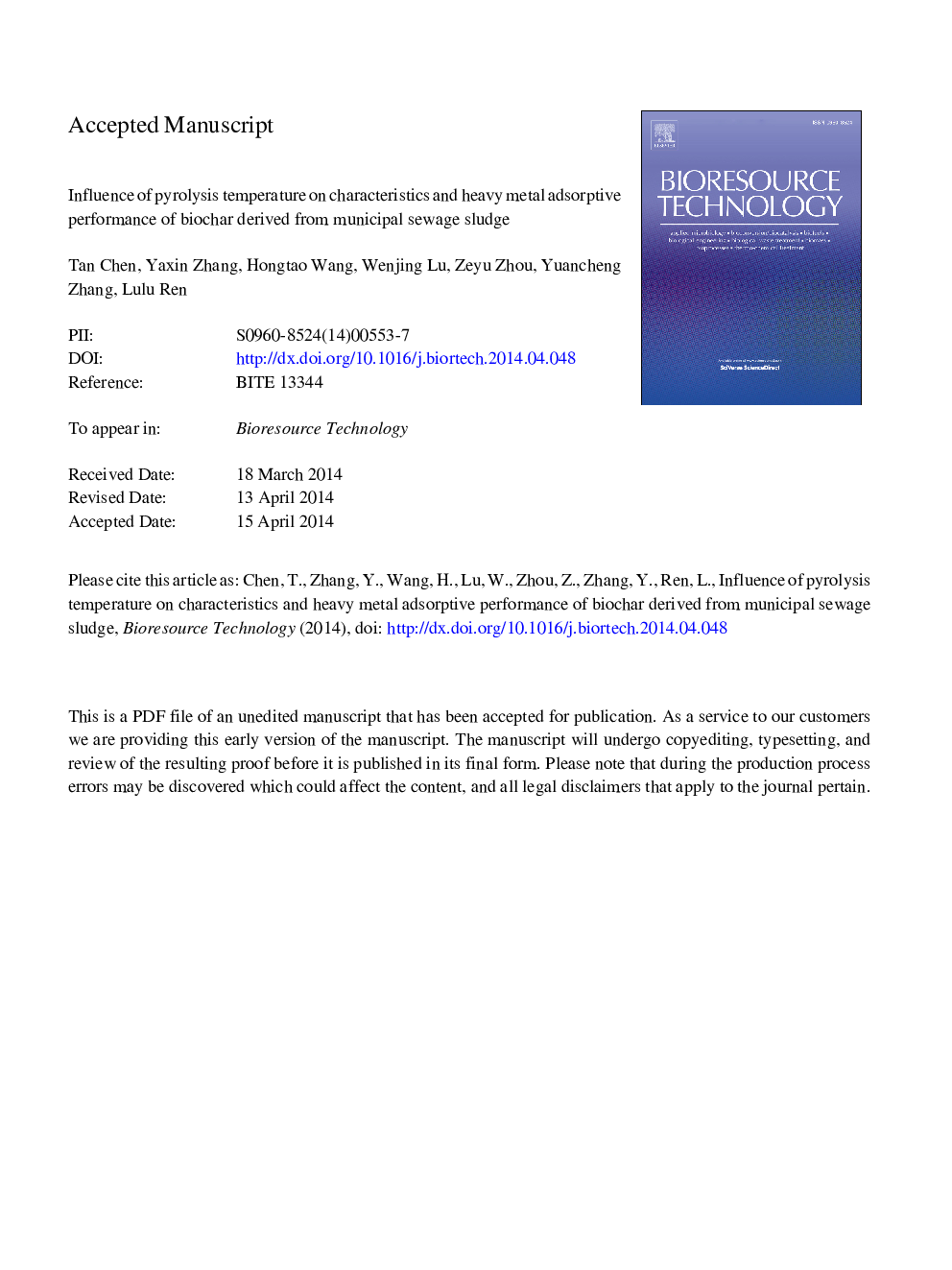| Article ID | Journal | Published Year | Pages | File Type |
|---|---|---|---|---|
| 7077835 | Bioresource Technology | 2014 | 31 Pages |
Abstract
To investigate systematically the influence of pyrolysis temperature on properties and heavy metal adsorption potential of municipal sludge biochar, biophysical dried sludge was pyrolyzed under temperature varying from 500 °C to 900 °C. The biochar yield decreased with the increase in pyrolysis temperature, while the ash content retained mostly, thus transforming the biochars into alkaline. The structure became porous as the temperature increased, and the concentrations of surface functional group elements remained low. Despite the comparatively high content of heavy metal in the biochar, the leaching toxicity of biochars was no more than 20% of the Chinese standard. In the batch experiments of cadmium(II) adsorption, the removal capacity of biochars improved under higher temperature, especially at 800 °C and 900 °C even one order of magnitude higher than that of the commercial activated carbon. For both energy recovery and heavy metal removal, the optimal pyrolysis temperature is 900 °C.
Related Topics
Physical Sciences and Engineering
Chemical Engineering
Process Chemistry and Technology
Authors
Chen Tan, Zhang Yaxin, Wang Hongtao, Lu Wenjing, Zhou Zeyu, Zhang Yuancheng, Ren Lulu,
